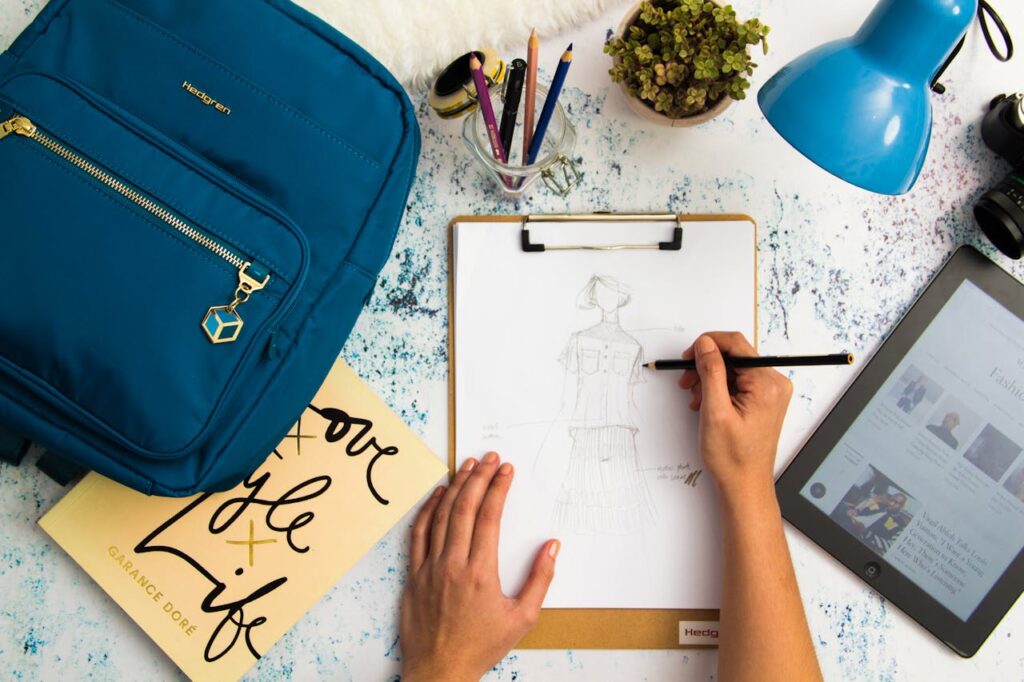Fashion design is more than just creating garments; it’s an art form that reflects culture, creativity, and innovation. In this guide, we delve deep into the realms of fashion design, covering everything from fundamental concepts to advanced techniques, providing you with a comprehensive understanding of this dynamic industry.
Fashion Design: Unveiling the Basics
Understanding Color Theory in Fashion Design
Color plays a pivotal role in fashion design, evoking emotions and setting the tone for a garment. From the vibrant hues of summer to the muted shades of winter, mastering color theory is essential for every fashion designer. Explore how different colors complement each other and learn how to create captivating color palettes for your designs.
Exploring Fabric Selection and Textures
The choice of fabric can transform a design from ordinary to extraordinary. Delve into the world of textiles, from luxurious silks to durable denims, and understand how fabric selection impacts the overall look and feel of a garment. Learn to experiment with textures and weave patterns to add depth and dimension to your designs.
Sketching and Fashion Illustration Techniques
Sketching is the cornerstone of fashion design, allowing designers to bring their concepts to life on paper. Master the art of fashion illustration, from capturing proportion and movement to refining details. Explore different sketching techniques and develop your unique style to communicate your design vision effectively.
Pattern Making and Garment Construction
Pattern making is the blueprint of fashion design, laying the foundation for garment construction. Learn the principles of pattern making, from drafting basic blocks to manipulating patterns for intricate designs. Discover the art of garment construction, including sewing techniques and finishing touches, to create impeccably tailored pieces.
Embracing Sustainable Fashion Design Practices
Eco-Friendly Materials and Ethical Sourcing
In a world increasingly conscious of environmental impact, sustainable fashion design practices are gaining momentum. Explore eco-friendly materials such as organic cotton, bamboo, and recycled fabrics, and learn about ethical sourcing practices that promote fair labor and reduce carbon footprint.
Upcycling and Zero-Waste Design Techniques
Upcycling offers a creative solution to reduce textile waste and breathe new life into old garments. Discover innovative zero-waste design techniques that minimize fabric wastage and embrace the concept of circular fashion. From patchwork quilts to repurposed denim, unleash your creativity while making a positive impact on the planet.
Slow Fashion Movement: Quality Over Quantity
In contrast to fast fashion’s disposable culture, the slow fashion movement advocates for quality over quantity. Embrace the ethos of mindful consumption and timeless design, prioritizing durability, craftsmanship, and longevity. Learn how to create timeless pieces that transcend fleeting trends and foster a deeper connection with your audience.
Leveraging Technology in Fashion Design
Digital Design Tools and CAD Software
Technology has revolutionized the fashion industry, empowering designers with advanced digital tools and CAD software. Explore the latest innovations in 3D modeling, virtual prototyping, and digital pattern making, streamlining the design process and enhancing creativity. Embrace technology as a catalyst for innovation and efficiency in fashion design.
Augmented Reality (AR) and Virtual Fashion Experiences
Augmented reality (AR) and virtual fashion experiences are redefining the way consumers interact with fashion. Dive into the immersive world of virtual fitting rooms, digital fashion shows, and AR-powered try-on experiences, blurring the lines between physical and digital realms. Embrace the future of fashion retailing with cutting-edge AR technologies.
FAQs
How do I become a fashion designer?
To become a fashion designer, pursue formal education in fashion designs or a related field, gain hands-on experience through internships or apprenticeships, and build a strong portfolio showcasing your creativity and skills.
What software do fashion designers use?
Fashion designers use a variety of software, including Adobe Illustrator for sketching and vector graphics, Photoshop for image editing and digital rendering, and CAD (Computer-Aided Design) software for pattern making and 3D modeling.
What are some sustainable fashion brands?
Several sustainable fashion brands prioritize ethical production practices and environmental stewardship, including Stella McCartney, Patagonia, Eileen Fisher, and Reformation.
How can I incorporate sustainability into my fashion designs?
Incorporate sustainability into your fashion designs by using eco-friendly materials, minimizing waste through zero-waste design techniques, embracing upcycling and recycling, and supporting ethical sourcing practices.
What is the difference between fashion design and fashion merchandising?
Fashion designs focuses on the creative process of designing garments, while fashion merchandising involves the business side of fashion, including marketing, retailing, and trend forecasting.
How has technology impacted fashion design?
Technology has revolutionized fashion designs by enhancing creativity, streamlining the design process, and transforming the way consumers interact with fashion through digital experiences and virtual technologies.
Conclusion
Fashion designs is a dynamic and multifaceted field that blends creativity, craftsmanship, and innovation. By mastering fundamental concepts, embracing sustainable practices, and leveraging technology, you can embark on a journey of endless possibilities in the world of fashion designs.

